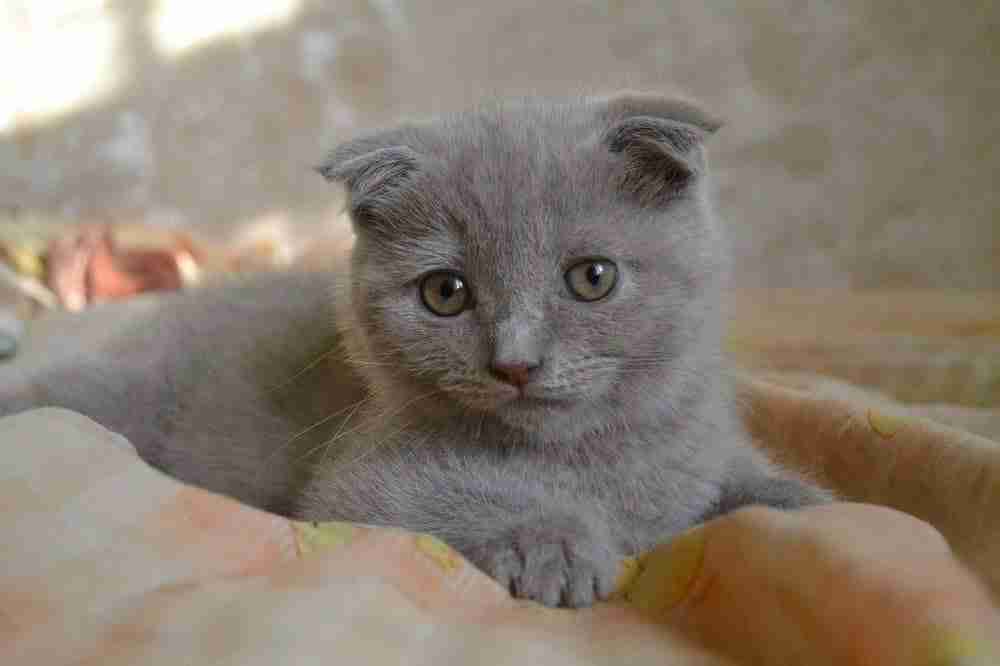Cats with small ears tend to look super cute and this makes them very desirable. A number of breeds produce short eared cats or cats that seem to have little ears. Check them out and see if you can select your favorite!
When people are considering bringing a cat home they are often looking for a cute cat or something that stands out from the crowd. Many people find that a cat with small ears is particularly cute. This is usually because the small ears accentuate all their other features, making eyes look bigger and faces look rounder creating that cute set of features that babies the world over are famous for.
Are Small Or Short Ears Natural?
Now you might think that whether a cat has small ears or large ears is just down to luck. But you would be wrong. Some cats are specifically bred to have smaller ears and some just have ears that look small proportionally due to their body shape and fur.
Cats breeds that are bred specifically to have small ears are the folds and curls. Folds such as the Scottish Fold have a normal size ear that droops or is folded to create the look of a smaller ear. Curls, on the other hand, are bred with ears that curl backward, also creating the impression of being smaller ears. The American Curl is a well-known breed of “curl”.
Cats with short ears in relation to their overall proportions have not been specifically bred to create a short-eared look – the short ears and cute look are a happy accident of breeding when owners were actually looking to bring other characteristics to prominence. Persians and British Shorthairs fall into this category. Persians have short-looking ears because their fur is relatively upright and long making ears look short. British Shorthairs have stout features that make the ears look proportionally shorter. Both make for cute cats.
Let’s take a more in-depth look at these and other, short-eared, cute, cats :
Cat Breeds With Small ears
American Curl
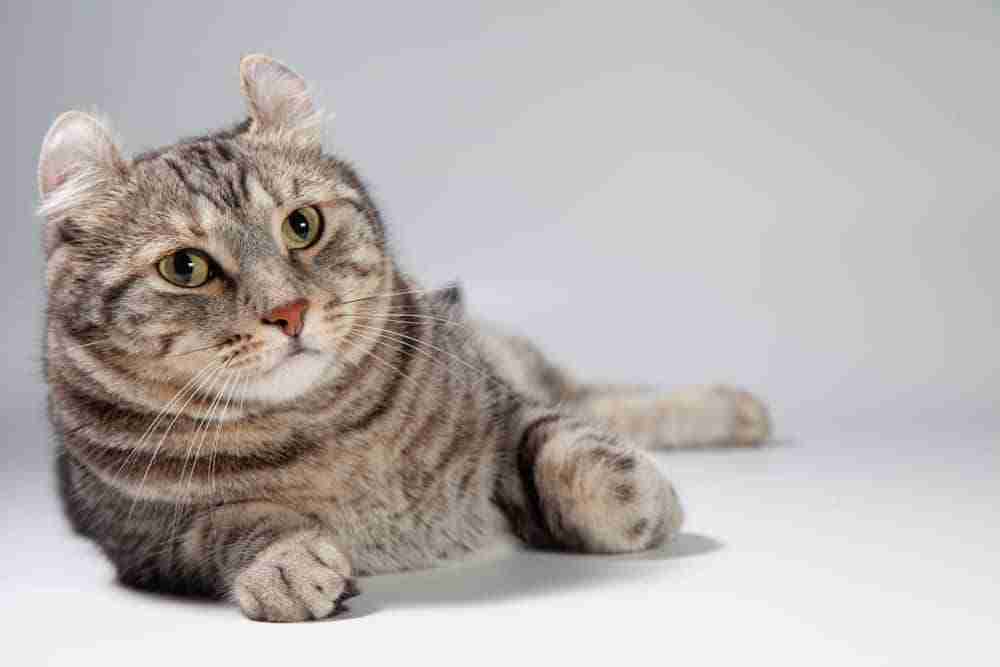
The American curl is a relatively new breed that only began showing in 1986. Unlike many other breeds, the American Curl is not derived from mixing existing pedigree cats. It is derived from spontaneous interbreeding between non-pedigree cats – simply a happy variation of nature!
It gets its name from its curled ears. The tops of the ears curl to the rear of the head creating a small-eared look.
Initially, kittens are born with straight ears. The ears then begin to curve within 48 hrs of birth and can continue to develop a curve over the following 4 months at which point things settle down.
The ears are rigid and forced bending can damage the cartilage in the ear.
The curled ears are derived from a gene mutation and the mutation only affects the cartilage in the ears so the breed is considered healthy. Many other breeds with mutations that affect cartilage are known to suffer joint problems – not so the American Curl.
American curls take 2 – 3 years to reach maturity and range in size from 2.6kgs for a small female through to 4.6 kgs for a large male.
They can be either long-haired or short-haired and come in a wide variety of colors and coat patterns reflecting their shared large genetic pool with non-pedigree cats.
As you can imagine, due to their non-pedigree lineage, they have personality traits similar to your common domesticated cat – utterly variable.
Highlander Cat
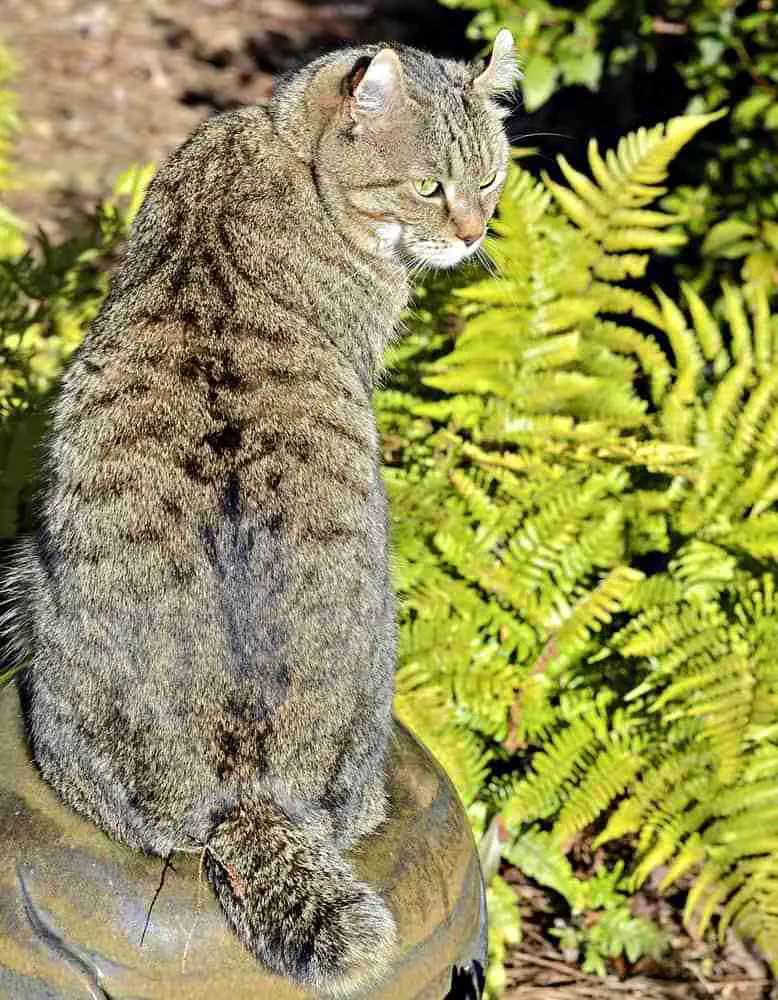
The highlander cat is a new experimental breed developed from two other experimental breeds: The jungle curl and Desert Lynx.
The highlander, like the American Curl, has curled ears, but in this case, the ears curl inward. The cat has not been specifically bred to be a curl, it has been bred to produce a big cat look. The breeders were looking to achieve a powerful big cat body with a wild cat look – as such, they were pretty successful – males can weigh in at 10kgs!
The Highlander only comes with tabby or striped markings – bicolor cats are disqualified from the breed. The tabby and striped markings reflect the desert lynx heritage.
Apart from body size and ear curl characteristics they have one other easily identifiable feature – they are a short tail cat breed.
The facial features have a big cat look – wider nose, sloped forehead. But the cat is not wild – they are social cats that appreciate human company, they are a high-energy cat suitable for homes with large families and lots of action and will get involved with children if allowed.
From a health perspective, they are generally quite healthy but sometimes have extra toes (polydactyl) that can give rise to joint wear later in life.
If you are looking for a cat with a wild look but small ears this could be your cat!
Scottish Fold

If you are looking for cute then the Scottish Fold is bound to attract your eye. The Scottish Fold has ears that fold forwards giving the impression that they are small. They are the same size as a normal cat’s ears – but the limp, folding of the ear completely changes their look.
The reason the ears fold is due to cartilage problems. Unlike other cats, the cartilage is not as high quality leading to the ears folding – but what makes them cute is the rest of their features in tandem with this folded ear.
They have broad, round but flatter faces than normal and peculiar round eyes creating a very cute look when teamed up with the folded ears. In terms of body and size, they are similar to most domestic cats.
The breed has been around since the 1960s and resulted from a natural gene mutation rather than interbreeding between pedigrees.
The breed is controversial due to health issues that arise from the problems associated with low-quality cartilage and ear health problems. Many cats are thought to develop and suffer from osteochondrodysplasia – a development abnormality that leads to degenerative joint diseases. Additionally, the folded ears may lead to problems with ear wax build-up and mites.
Whilst they are cute, you might end up with high vet bills down the line if you opted for a Scottish fold.
Ukrainian Levkoy
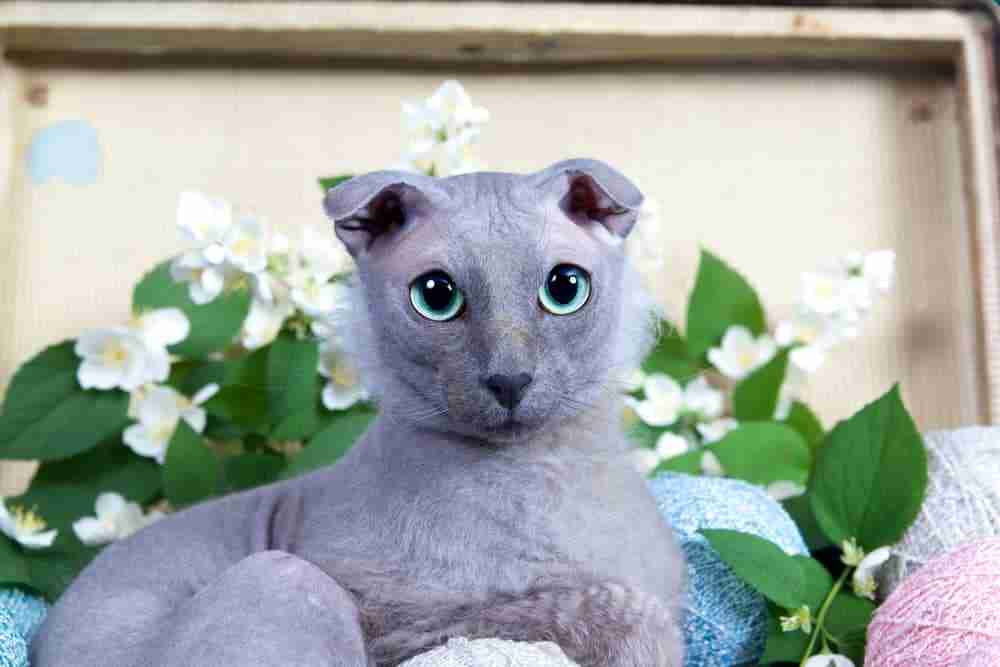
The Levkoy is eye-catching! The cat has folded ears and is hairless giving quite a stand-out appearance. Now, some would say cute and others would say they are a weird-looking cat breed! We will let you decide.
The Ukrainian Levkoy is a modern breed having only appeared in the last 15 years. It is a result of breeding between male Scottish Fold cats and female hairless Donskoy cats. The result is a long body, a sleek cat with a strong muscular appearance. They are a mid-size cat with a small ear look due to the folded nature of the ear inherited from their father’s genes.
Personality-wise they are intelligent, friendly, active, and are notably social with people or other household pets.
Of course, you have probably realized that from a health perspective the influence of the Scottish Fold is bound to have an effect – and it does. Unfortunately, the Levkoy is susceptible to arthritis and bone deformities.
Persian

The Persian cat breed is one of the oldest breeds known to man. Instantly recognizable by their long body fur and flatter face, they do actually have proportionally smaller ears than your average domestic cat.
The smaller ears are even more accentuated by the fur on the head and face which has a tendency to be shorter than their body hair but more upright and fluffy. The effect is that the ears on a Persian look small and hardly seem to peek out of their fur to any great extent!
Persians have been around for such a long time that health problems – other than those associated with all flat-faced cats do not seem to be a big issue – life expectancy is still a good 12-17 years.
If you are looking for an indoor family-friendly cat a Persian is a good choice – they like to stay at floor level and are social with people they trust. Just make sure you have some time for grooming because that long fluffy fur means you are going to be busy if you want to keep your Persian looking good!
British Shorthair
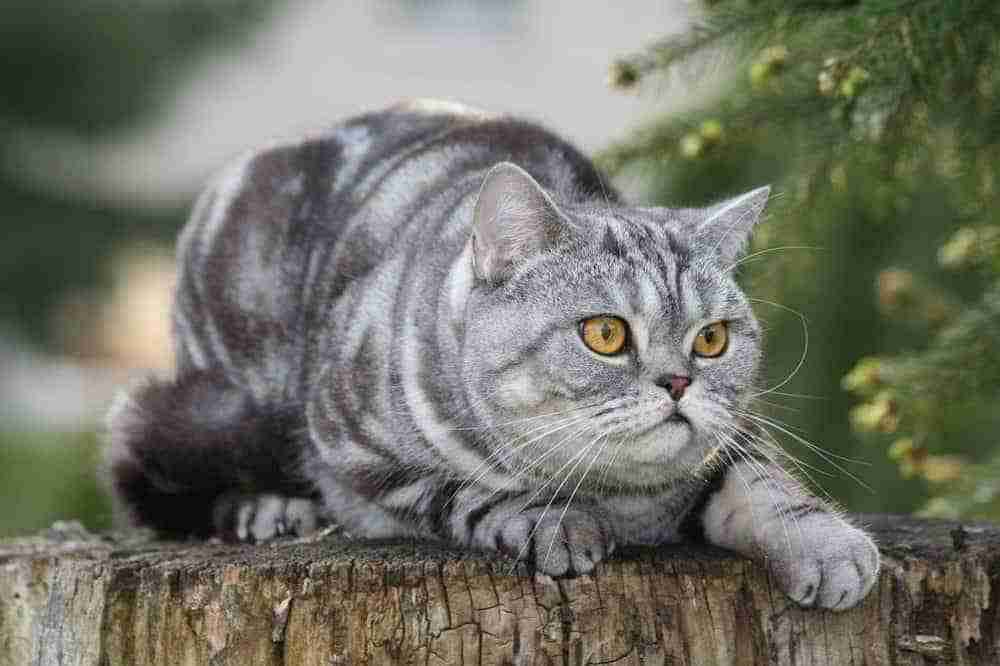
The British Shorthair cat breed is an ancient cat breed thought to date back to Roman times. Basically, the Romans invaded Britain, and roman cats mixed with the local wildcat population.
The result was a stocky, powerful-looking cat with a rounded, muscular physique and a dense short almost fluffy coat. The isolated, edge of Europe location, meant the breed was preserved through time.
It is the coat and powerful physique that makes the ears on this cat seem little compared to the rest of their cousins.
They come in all sorts of colors and coat patterns with the grey cat or “British blue” being the dominant color, although ginger, black, and tabby variations and colorpoints all exist.
Being an ancient breed they tend not to suffer from unusual health issues and have a decent life expectancy ranging from 11 to 20 years.
The British Shorthair is not a lap cat, does not particularly like to be picked up, and likes to keep its feet on the ground. Having said that they are family cats and will follow you around and mix with children safely – they just won’t spend time doing high-energy play. Always about without being needy.
Final Words
Cats with small ears can definitely be cute, but in some, it comes at a price.
Many breeds with folded or curled ears have health issues due to mutations of genes. These genes are specifically promoted to allow for the ear characteristics but unfortunately can cause problems with joints later in the cat’s life.
If you want small ears then Persians and British Shorthairs with their big round faces and fluffy fur coats may be able to fulfill your needs whilst also giving you a healthy cat with a problem-free lifespan.
